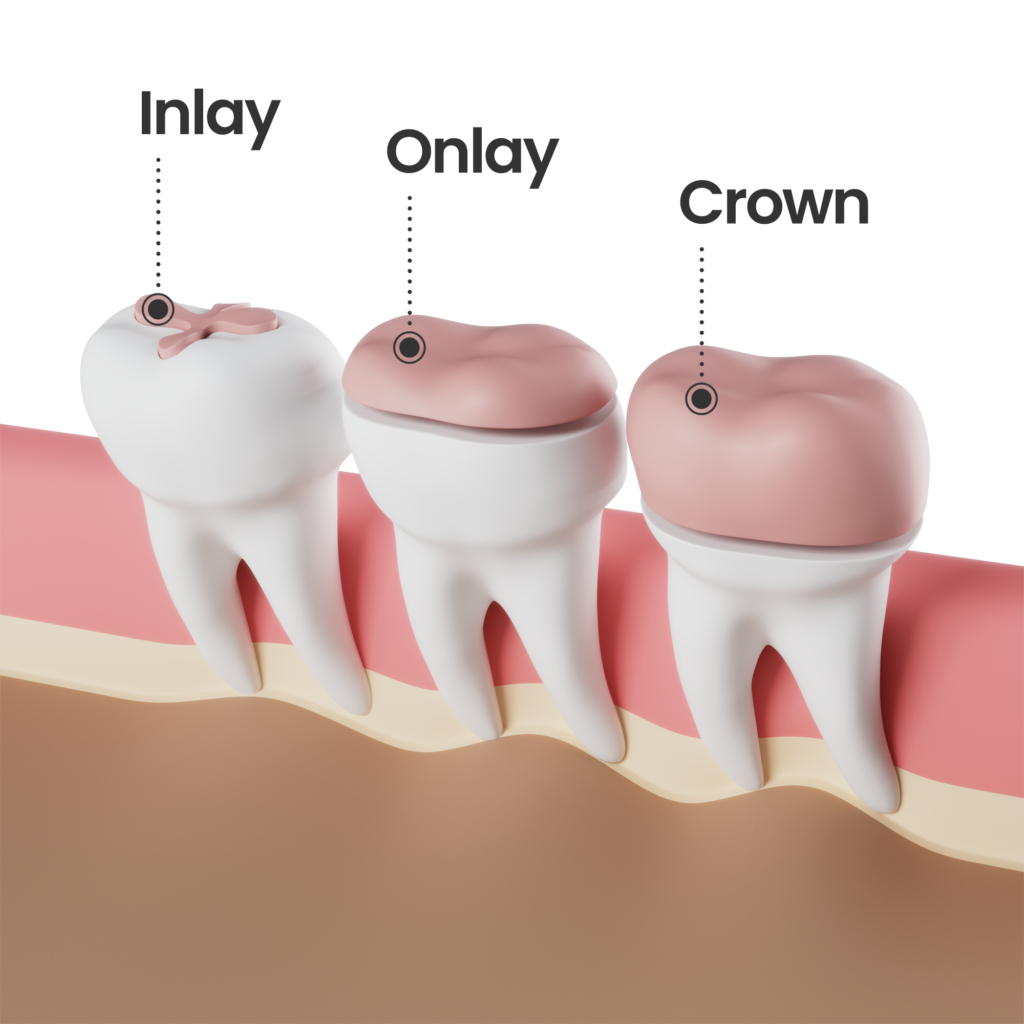Inlays and onlays play a significant role in restorative dentistry, especially for patients seeking crown & bridge treatment in Panvel to restore and enhance damaged teeth while preserving natural structure. These custom restorations are designed to fit precisely within or over the contours of a damaged tooth, balancing function, aesthetics, and longevity. Understanding the materials used in inlays and onlays is essential, as each material brings specific benefits and applications. Here’s an in-depth look at these materials and how they contribute to an effective, lasting dental restoration.
Why Material Choice Matters in Inlays and Onlays
The material selected for an inlay or onlay impacts multiple aspects of the restoration:
- Durability: Can withstand daily chewing forces and resist wear.
- Aesthetics: Blends seamlessly with natural tooth color and transparency.
- Biocompatibility: Reduces the risk of irritation or allergic reactions.
- Cost: Plays a role in the overall treatment expense. Each patient’s needs are unique, so dentists consider factors such as tooth location, the extent of damage, and budget to recommend the most suitable material.
Common Materials Used in Inlays and Onlays
Porcelain
Porcelain is a popular choice due to its aesthetic appeal and strength, particularly for visible areas of the mouth.
- Advantages: Porcelain is stain-resistant, mimics natural tooth enamel, and lasts with proper care.
- Considerations: It’s more costly than other materials and may fracture under excessive pressure, making it ideal for patients seeking a highly aesthetic, durable restoration in visible areas.
Composite Resin
Composite resin, made from plastic and glass particles, provides a natural look without the cost of porcelain.
- Advantages: Composite resin is cost-effective, bonds well with teeth, and doesn’t cause temperature sensitivity.
- Considerations: It wears more easily and may stain over time, making it a practical choice for lower-impact areas of the mouth.
Gold
Gold remains an excellent choice for durability and biocompatibility, especially for back teeth.
- Advantages: Gold is durable, temperature-stable, and less likely to cause irritation.
- Considerations: The color is less ideal for visible teeth, and gold restorations are typically more costly.
Ceramic
Ceramic offers an alternative to porcelain, providing enhanced durability and aesthetics.
- Advantages: Ceramic is durable, stain-resistant, and mimics natural translucency.
- Considerations: It may chip in patients who grind their teeth and is generally higher-priced than composite resin, though slightly less costly than porcelain.
Hybrid Ceramics
Hybrid ceramics combine ceramic and composite properties, offering durability with added flexibility.
- Advantages: Resistant to fractures, natural in appearance, and easier to adjust for a precise fit.
- Considerations: Hybrid ceramics are relatively new, with limited long-term data, and may cost more than composite resin.
Choosing the Right Material for Your Inlay or Onlay
Each inlay or onlay material has unique strengths. Dentists collaborate with patients to choose the best option based on tooth damage, location, budget, and aesthetic goals. Consulting with a dentist can help you make an informed decision for a lasting, lifestyle-compatible dental restoration.
